Filter by
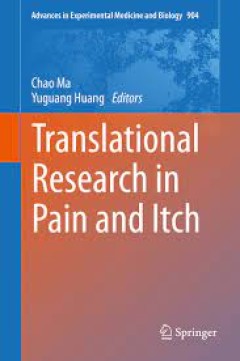
Translational Research in Pain and Itch
This book provides a comprehensive review of the latest advances in translational pain and itch research, and presents the cutting-edge developments in the study of our two principal, yet most mysteries sensations. Despite the slow progress in the discovery of effective therapies for chronic pain and pruritus, scientists around the globe now have a better understanding of why and how these cond…
- Edition
- 1
- ISBN/ISSN
- 978-94-017-7535-9
- Collation
- XI, 147
- Series Title
- Advances in Experimental Medicine and Biology
- Call Number
- -
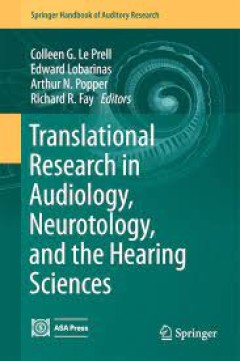
Translational Research in Audiology, Neurotology, and the Hearing Sciences
Translational Research is the interface between basic science and human clinical application, including the entire process from animal studies to human clinical trials (phases I, II, and III). Translational Research moves promising basic science results from the laboratory to bedside application. Yet, this transition is often the least-defined, least-understood part of the research process. Mos…
- Edition
- 1
- ISBN/ISSN
- 978-3-319-40846-0
- Collation
- XVIII, 265
- Series Title
- Springer Handbook of Auditory Research
- Call Number
- -
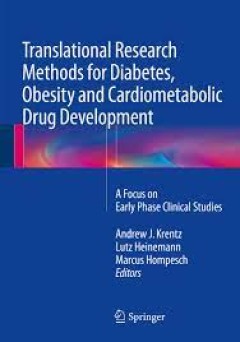
Translational Research Methods for Diabetes, Obesity and Cardiometabolic Drug…
The world is beset by a pandemic of obesity and type 2 diabetes and the need for new drugs is startlingly clear; recent years have seen a huge increase in research activity to fill this gap. The development of new drugs for diabetes and obesity must be founded upon a sound appreciation of the pathophysiology of these common disorders. The dual defects of insulin resistance and impaired insulin …
- Edition
- 1
- ISBN/ISSN
- 978-1-4471-7032-7
- Collation
- XII, 312
- Series Title
- -
- Call Number
- -
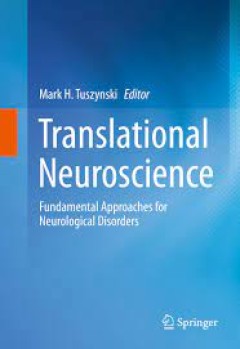
Translational Neuroscience
Translational Neuroscience offers a far-reaching and insightful series of perspectives on the effort to bring potentially revolutionary new classes of therapies to the clinic, thereby transforming the treatment of human nervous system disorders. Great advances in the fields of basic neuroscience, molecular biology, genomics, gene therapy, cell therapy, stem cell biology, information technology,…
- Edition
- 1
- ISBN/ISSN
- 978-1-4899-7652-9
- Collation
- XV, 584
- Series Title
- -
- Call Number
- -
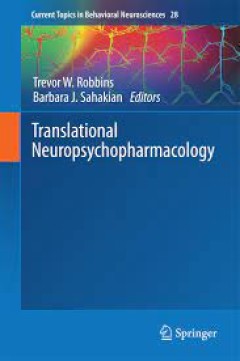
Translational Neuropsychopharmacology
This book covers wide areas of animal and human psychopharmacology with clinical utility in the treatment of psychiatric and neurological (e.g Alzheimer's disease) disorders. The main theme is to develop a new paradigm for drug discovery that questions the claim that animal models or assays fail adequately to predict Phase 3 clinical trials. A new paradigm is advocated that stresses the importa…
- Edition
- 1
- ISBN/ISSN
- 978-3-319-33911-5
- Collation
- XII, 498
- Series Title
- Current Topics in Behavioral Neurosciences
- Call Number
- -
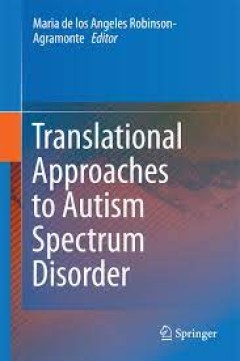
Translational Approaches to Autism Spectrum Disorder
This book addresses and synthesizes recent basic, translational, and clinical research with the goal of understanding the mechanisms behind autism spectrum disorder (ASD) and how they lead to altered brain function and behavior. Bringing clarity to these mechanisms will lead to more effective therapies for the various heterogeneous pathologies that comprise ASD. Currently there are few, if any,…
- Edition
- 1
- ISBN/ISSN
- 978-3-319-38657-7
- Collation
- XIV, 218
- Series Title
- -
- Call Number
- -
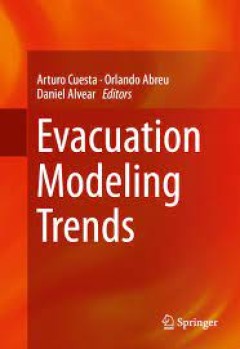
Evacuation Modeling Trends
This book presents an overview of modeling definitions and concepts, theory on human behavior and human performance data, available tools and simulation approaches, model development, and application and validation methods. It considers the data and research efforts needed to develop and incorporate functions for the different parameters into comprehensive escape and evacuation simulations, wit…
- Edition
- -
- ISBN/ISSN
- 978-3-319-20708-7
- Collation
- VII, 133
- Series Title
- -
- Call Number
- -

Eutrophication and Oligotrophication in Japanese Estuaries The present statu…
This book presents lessons learnt from Japan’s past, in relation to coastal waters, industrial pollutants and concentrated urban populations. It examines ecosystem damage and pollution in coastal sea areas and addresses the question: What is the present status of Japanese estuaries from the view point of eutrophication and oligotrophication? The authors describe three typical situations, name…
- Edition
- -
- ISBN/ISSN
- 978-94-017-9915-7
- Collation
- 17 b/w illustrations, 140 illustrations in colour
- Series Title
- -
- Call Number
- -
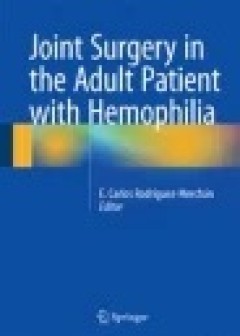
Joint Surgery in the Adult Patient with Hemophilia
This book provides clear instruction on the surgical treatment of joint problems in adult hemophilia patients. The procedures applicable to specific joints, including the shoulder, elbow, hip, knee and ankle, are carefully reviewed with the aid of high-quality illustrations. The surgical treatment of articular hemophilic pseudotumors and bone cysts is also considered. In addition, clinically re…
- Edition
- -
- ISBN/ISSN
- 978-3-319-10780-6
- Collation
- -
- Series Title
- -
- Call Number
- -
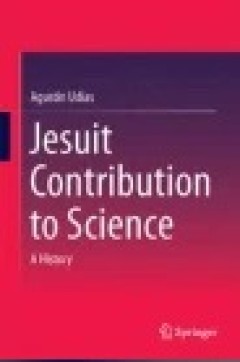
Jesuit Contribution to Science: A History
This book presents a comprehensive history of the many contributions the Jesuits made to science from their founding to the present. It also links the Jesuits dedication to science with their specific spirituality which tries to find God in all things. The book begins with Christopher Clavius, professor of mathematics in the Roman College between 1567 and 1595, the initiator of this tradition. …
- Edition
- -
- ISBN/ISSN
- 978-3-319-08365-0
- Collation
- -
- Series Title
- -
- Call Number
- -
 Computer Science, Information & General Works
Computer Science, Information & General Works  Philosophy & Psychology
Philosophy & Psychology  Religion
Religion  Social Sciences
Social Sciences  Language
Language  Pure Science
Pure Science  Applied Sciences
Applied Sciences  Art & Recreation
Art & Recreation  Literature
Literature  History & Geography
History & Geography